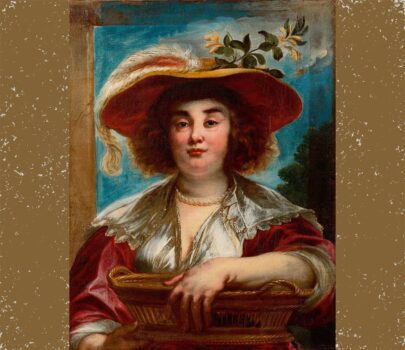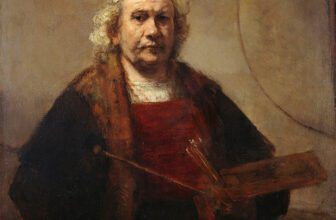What are Jacob Jordaens’ Most Famous Paintings
In the shadow of Rubens and Van Dyck, another master painter flourished, his name, Jacob Jordaens. With a palette as rich as Flemish soil and a brush guided by wit, sensuality, and realism, Jordaens was a force of nature in the Baroque era of Northern Europe. Born in Antwerp, a bustling city of trade, faith, and art, Jordaens took the theatrical flair of the Baroque and gave it a uniquely earthy and human touch.
Though not as internationally celebrated as some of his contemporaries, Jordaens carved his own path with powerful compositions, boisterous genre scenes, and allegorical paintings. His art was bold, humorous, deeply Catholic, and yet surprisingly accessible.
This is the story of Jacob Jordaens, his masterpieces, influence, artistic legacy, and where his work continues to live on.
The Early Life of Jacob Jordaens
Jacob (Jacques) Jordaens was born on May 19, 1593, in Antwerp, which was then part of the Spanish Netherlands. The city was a cultural melting pot, prosperous, devoutly Catholic, and home to some of the greatest artists of the time.
He trained under Adam van Noort, a painter who also mentored Peter Paul Rubens, although Rubens would go on to study in Italy and absorb the classical and Renaissance traditions. Unlike Rubens, Jordaens never left Antwerp, choosing instead to build his career and reputation at home.
In 1615, Jordaens married van Noort’s daughter, Catharina, solidifying his place within Antwerp’s artistic circles.
Though originally trained as a tapestry designer, Jordaens quickly turned to painting, focusing on religious themes, classical mythology, and genre scenes that celebrated the common folk and their everyday pleasures.
What Is Jacob Jordaens Known For?
Jordaens is widely known for:
Vibrant Genre Paintings: His boisterous scenes of peasant life, such as family feasts and drinking celebrations, are full of energy and realism.
Mythological and Allegorical Subjects: He often used classical myths to explore human nature, with a particular focus on the moral lessons of excess and folly.
Religious Paintings: Despite his later conversion to Protestantism, his early works often reflect Catholic themes rich in theological symbolism.
Baroque Style: His work shares the drama and dynamism of Rubens, though often with more satirical or humanistic undertones.
Murals and Tapestry Design: Jordaens was a sought-after decorator of large spaces and contributed to many civic and religious projects.
Jordaens’ Signature Style: Flesh, Laughter, and Humanity
What truly defines Jordaens’ painting style is his unapologetic celebration of the human form, especially the fleshy, round figures of peasants and mythological characters. His work radiates physicality and humor, often poking fun at human nature.
He was a master of color and light, using warm, earthy tones and dynamic compositions to draw viewers into his raucous, life-affirming scenes. He often included himself and his family members as models in his paintings, giving his work an autobiographical and personal edge.
Jacob Jordaens’ Most Famous Paintings
Several of Jordaens’ paintings have become staples of Baroque art history. Here are some of his most famous and celebrated works:
1. “The King Drinks” (1640)
Also known as The Feast of the Bean King, this painting is perhaps Jordaens’ most iconic. It depicts the traditional Epiphany celebration, where a “king” is chosen by lot to preside over a feast. The painting bursts with life, music, wine, laughter, and a clear affection for the chaos of humanity.
Key Themes: Folly, festivity, inversion of social roles
Current Location: Royal Museum of Fine Arts, Brussels
2. “As the Old Sing, So Pipe the Young” (c. 1638-1640)
This allegorical painting plays with a Flemish proverb about how children learn by example. It shows a multigenerational family singing and drinking while children mimic them on musical instruments. The moral message? Beware what you teach your children.
Key Themes: Moral education, generational habits
Current Location: Musée des Beaux-Arts, Valenciennes (multiple versions exist)
3. “Satyr and the Peasant” (c. 1620)
Inspired by Aesop’s fable, this painting portrays a satyr shocked by a man who blows on his hands to warm them and then on his soup to cool it. It’s a commentary on the duplicity of human nature.
Key Themes: Folklore, morality, contradiction
Current Location: Hermitage Museum, Saint Petersburg
4. “Prometheus Bound” (c. 1640)
In this grand mythological scene, Jordaens depicts the Greek titan Prometheus being punished by Zeus. The composition and musculature show clear influence from Rubens, but Jordaens’ gritty textures and raw emotion make it his own.
Key Themes: Suffering, rebellion, divine punishment
Current Location: Philadelphia Museum of Art
5. “The Triumph of Frederik Hendrik” (c. 1650)
A monumental painting, originally designed for the Oranjezaal in Huis ten Bosch palace in The Hague. It showcases Jordaens’ skill as a court painter and his flair for political allegory.
Key Themes: Royal propaganda, heroism, allegory
Current Location: Oranjezaal, Huis ten Bosch, The Hague (not open to the public)
How Many Paintings Did Jacob Jordaens Create?
Over his lifetime, Jacob Jordaens created an estimated 600–700 paintings, in addition to numerous drawings, prints, and designs for tapestries and murals.
Because Jordaens had a large workshop, some works attributed to him may have been completed with the help of assistants. Nevertheless, his unique stylistic imprint is unmistakable, lush colors, hearty figures, and lively compositions.
What Is the Most Expensive Painting by Jacob Jordaens?
As of the latest public auctions, Jordaens’ paintings have fetched millions of dollars, although they are still generally less expensive than those of Rubens or Rembrandt.
One of the highest known auction prices for a Jordaens painting is:
“The Holy Family with Saint John the Baptist”, which sold for over $5 million USD at Sotheby’s.
Other major works have sold for $2–4 million, depending on condition, provenance, and subject matter. Private collectors and institutions compete for his mythological and genre scenes, particularly those with strong documentation and pristine condition.
Where Are Jacob Jordaens’ Paintings Located?
Jordaens’ paintings are spread across major museums and private collections worldwide. Some of the most notable locations include:
🔹 Belgium
Royal Museum of Fine Arts, Antwerp
Royal Museums of Fine Arts, Brussels
🔹 The Netherlands
Mauritshuis, The Hague
Rijksmuseum, Amsterdam
🔹 France
Louvre Museum, Paris
Musée des Beaux-Arts, Lyon
🔹 United Kingdom
The National Gallery, London
The Wallace Collection, London
🔹 United States
Philadelphia Museum of Art
The J. Paul Getty Museum, Los Angeles
The Metropolitan Museum of Art, New York
🔹 Russia
The Hermitage Museum, Saint Petersburg
🔹 Germany
Gemäldegalerie, Berlin
Alte Pinakothek, Munich
Many of his paintings also remain in churches, castles, and historical residences across Europe, especially in Belgium and the Netherlands.
What Is Jacob Jordaens’ Legacy?
Jacob Jordaens’ legacy lies in his fusion of Baroque grandeur with domestic realism. He painted people as they were, laughing, singing, drinking, aging, sinning. His work brings the Baroque down to earth, grounding myth and morality in flesh and familiarity.
His legacy includes:
Humanizing Baroque Art: While Rubens idealized myth and religion, Jordaens brought authenticity and everyday life into his canvases.
Influence on Genre Painting: He helped define Flemish genre scenes that influenced painters well into the 18th century.
Cultural Patriotism: As a Protestant in a Catholic region, he was still embraced by the Catholic elite, showing his art transcended religious divisions.
Pictorial Proverbs: Jordaens embedded folk wisdom into his paintings, preserving Flemish culture in visual form.
Technical Brilliance: His use of light, texture, and composition mark him as a technical equal to the best of the Baroque masters.
He died in 1678 at the age of 85, unusually long-lived for the era, leaving behind an enormous body of work and a respected name that continues to be studied and admired.
The Heart of the Baroque
Jacob Jordaens may not have wandered far from Antwerp, but his paintings have traveled the globe, telling timeless stories of humanity. From the halls of European palaces to the walls of international museums, his work lives on, smiling, feasting, and reminding us that art can be both profound and playful.
In the grand tapestry of Baroque art, Jordaens is the thread that binds the sacred with the silly, the divine with the domestic. His paintings are windows into the soul of 17th-century Flanders, vibrant with the joys and follies of life.
Summary Snapshot
| Attribute | Details |
|---|---|
| Born | May 19, 1593 – Antwerp, Flanders |
| Died | October 18, 1678 – Antwerp |
| Known For | Genre scenes, mythological and religious paintings |
| Most Famous Works | The King Drinks, As the Old Sing, Satyr and the Peasant |
| Estimated Number of Paintings | 600–700 |
| Most Expensive Sale | The Holy Family – Over $5 million |
| Locations of Paintings | Antwerp, Brussels, Paris, London, New York, St. Petersburg |
| Legacy | Earthy humanism in Baroque art, moral storytelling, visual proverbs |




